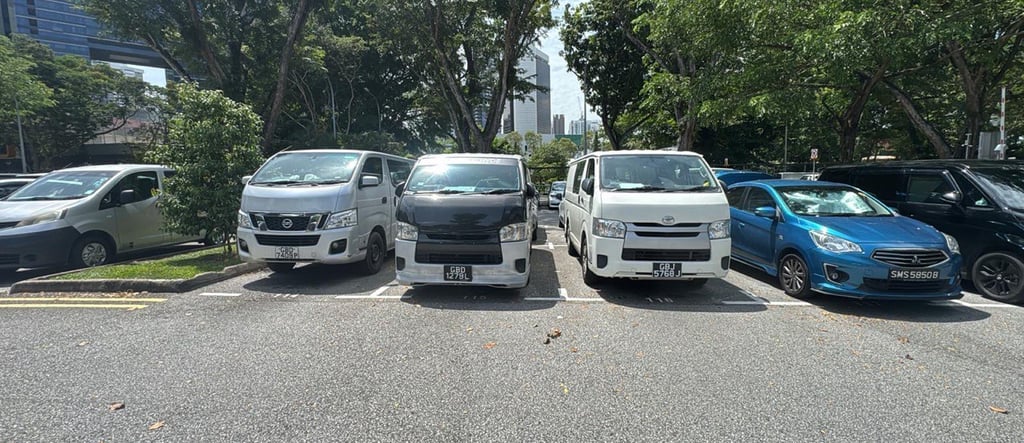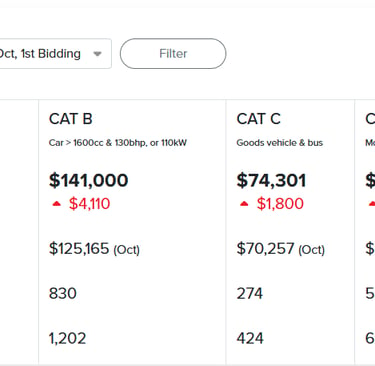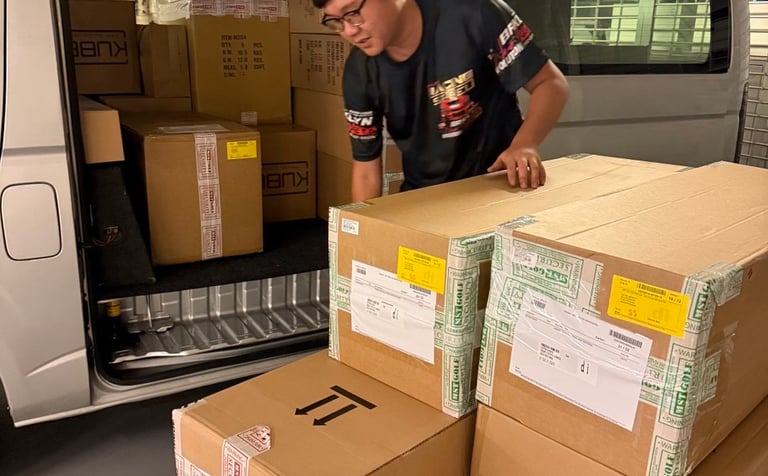Cost of Hiring Your Own Delivery Driver in Singapore
10/16/20255 min read


Understanding the Costs of Hiring a Delivery Driver
When considering the option of hiring a delivery driver for a small business in Singapore, it is important to understand the various costs involved, which can be broadly classified into direct and indirect expenses. Each of these costs must be carefully evaluated to ensure that the investment aligns with the business's operational goals and financial capabilities.
Direct Costs
Direct costs typically include the salary and benefits of the delivery driver. Salaries can vary based on factors such as experience and expertise, but small businesses should expect to pay competitively to attract reliable personnel. In addition to salary, employers are responsible for providing benefits, which may encompass health insurance, retirement contributions, and bonuses. These added expenses contribute significantly to the overall cost of hiring and should be factored into the budgetary considerations.
With the ever increasing price of COE (S$74,301 for goods vehicles as at October 2025), the cost of purchasing a new van can be a large purchase that smaller companies may not have the budget to account for.
Moreover, insurance is another essential direct cost. Employers must cover liability insurance, which protects both the business and the driver in case of accidents or damages incurred during deliveries. Compliance with local regulations regarding worker compensation for delivery drivers further adds to this financial outlay.
Indirect Costs
Indirect costs also play a critical role in the overall financial picture. Training is a necessary expense that ensures the driver is well-acquainted with safe driving practices and is aware of company policies. Additionally, vehicle maintenance is a recurring cost that includes regular servicing, repairs, and fuel expenditures. Businesses should also consider administrative expenses, which may involve scheduling, payroll processing, and other related duties that accompany having an in-house delivery team.
Hiring a delivery driver involves a comprehensive examination of both direct and indirect costs. By understanding these expenses, small businesses in Singapore can make informed decisions about their delivery operations and ensure effective budgeting. The effective management of these costs is crucial to sustaining a profitable and efficient business model.
In-House Delivery vs. Third-Party Delivery Services
When weighing the options of hiring an in-house delivery driver versus utilizing third-party delivery services in Singapore, it is crucial for small businesses to conduct a comprehensive cost analysis. The total costs associated with maintaining an in-house driver include wages, benefits, insurance, and vehicle maintenance. In contrast, third-party delivery services, such as Grab, Ninjavan, and Lalamove, offer variable pricing models based on delivery distance, time, and service type. These modern delivery platforms often integrate seamlessly with business operations, providing an efficient solution without the overhead costs associated with in-house drivers.
The operational efficiencies presented by third-party services can be particularly attractive for small business owners. These platforms not only manage logistics but also offer access to a large fleet of drivers, reducing wait times and ensuring faster deliveries. The flexibility in service usage allows businesses to scale their delivery capabilities with demand fluctuations without the burden of fixed costs; basically whatever you use is however much you will spend. Furthermore, third-party providers typically own the delivery vehicles, thus alleviating maintenance concerns and potential service disruptions.
In addition to cost and efficiency, the advantages of outsourcing logistics extend to customer service. Established delivery platforms often provide tracking features and customer service support, enhancing the overall delivery experience for consumers. This level of professionalism can significantly contribute to customer satisfaction and loyalty, which are critical determinants of business success. Companies weighing these options must also consider factors such as market reach and customer demographics, as third-party services often have a more extensive operational footprint than a small business could achieve independently.
Although there can be some argument in terms of the quality of service provided by these logistics provider in that given the scale and sheer number of drivers in the company, it becomes difficult to maintain the same service standards across the multitude of individuals employed. Hence why you may hear stories of items being mishandled during deliveries, inconsistent wait times and more.
Ultimately, the decision between in-house and third-party delivery services will hinge not only on immediate costs but also on long-term operational effectiveness and the ability to meet customer expectations efficiently.
Challenges Faced by Small Businesses Managing Their Own Delivery Drivers
Managing logistics and delivery in-house often presents numerous challenges for small businesses in Singapore. One of the primary issues is scheduling, which can be a complex task, particularly if delivery demands fluctuate. Small businesses may struggle to efficiently allocate driver shifts based on varying order volumes, leading to either underutilization of resources during quiet periods or a backlog during peak times. This unpredictability can ultimately impact customer satisfaction and delivery timeliness.
Another significant challenge is driver accountability. Ensuring that drivers adhere to schedules, follow traffic regulations, and deliver items safely can be difficult. Without established protocols and oversight, small businesses may encounter issues such as missed deliveries or customer service complaints, resulting in potential harm to their reputation. This lack of accountability can also lead to increased operational costs, as unmonitored drivers may engage in behaviors resulting in fines or additional expenses.
Vehicle upkeep cost is another vital consideration for small businesses that manage their own delivery drivers. Regular maintenance is crucial to ensure that vehicles remain roadworthy and reliable. However, managing fleet maintenance requires time, financial resources, and organizational skills that small businesses may not possess. Disruptions caused by vehicle breakdowns can lead to delays in deliveries, tightening the link between vehicle management and overall operational effectiveness.
Furthermore, compliance with local regulations adds another layer of complexity. Small businesses must be aware of licensing requirements, insurance obligations, and safety standards applicable to their drivers and vehicles. Failure to comply with these regulations could result in penalties or legal repercussions, diverting attention from primary business objectives. Ultimately, the time and energy required to manage a fleet detracts from a business’s ability to focus on core functions such as product development, marketing, and customer relations, which further accentuates the difficulty of managing an in-house logistics team.
Humble Van Delivery: A Solution for Small Businesses in Singapore
Running a small business in Singapore is already tough enough, so keeping operations lean and efficient can really make or break things. That’s where Humble Van Delivery steps in. Instead of taking on the cost and headache of hiring your own delivery driver, you get a fuss-free, cost-effective logistics partner that lets you focus on what actually grows your business.
Humble Van Delivery was built with small local businesses in mind. By outsourcing your deliveries, you immediately save on recruitment, training, salaries, and all the extra admin work that comes with managing staff. Their pricing is straightforward and flexible, so whether you’re just starting out or already scaling up, there’s a package that fits nicely into your budget. No payroll, no employee benefits, no hidden commitments — just pay for what you need.
Speed and reliability are also a big part of the appeal. Their drivers know Singapore roads well and are trained to get things from point A to B quickly and safely. This means your customers get their orders on time, and you don’t have to worry about chasing anyone. With real-time tracking, you’ll always know where your deliveries are, making it easier to keep your customers updated and happy.
Plenty of businesses that have worked with Humble Van Delivery say it’s been a game-changer. They’ve saved hours each week, improved their customer reviews, and enjoyed smooth, predictable delivery schedules. Features like pre-booked time slots, simple online booking, and easy tracking make the whole process very hassle-free.
At the end of the day, partnering with Humble Van Delivery removes a huge chunk of operational stress. It frees up your time and energy so you can focus on your products, your customers, and the bigger plans you have for your business — while they handle the driving.




